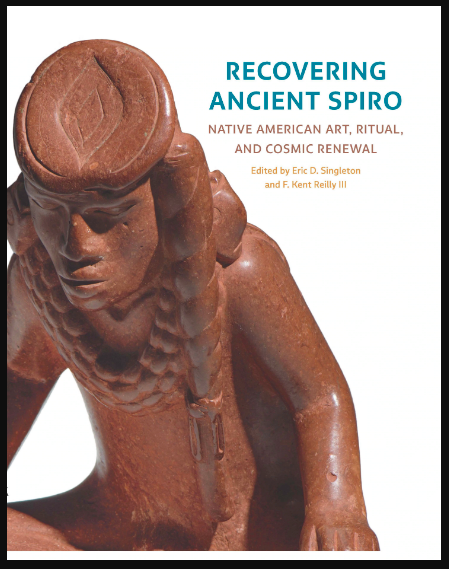Unearthing Spiro: The Forgotten Riches of a Native American Civilization
In 1933, a group of gold prospectors in eastern Oklahoma stumbled upon a remarkable archaeological find when one of their own struck a pickaxe into clay, releasing air from a sealed burial chamber that had remained intact for over 500 years. This discovery at Spiro, the largest ceremonial mound city of the Mississippian culture, revealed a treasure trove of Native American artifacts that was unlike anything previously seen in North America.
The findings included engraved conch shells, intricate pearl and shell beads, and ceremonial items such as copper breastplates and large human effigy pipes. It was hailed by the media as an American equivalent to King Tutankhamun’s tomb, showcasing the artistry and craftsmanship of a civilization that thrived along extensive trade routes across the continent.
Eric Singleton, curator of ethnology at the National Cowboy & Western Heritage Museum, reflected on the significance of the find, stating, “Nothing like this had ever been discovered anywhere else in North America.” However, the treasures soon fell victim to widespread looting. The Pocola Mining Company, composed of local men, quickly sold off the artifacts globally, scattering them across more than 65 museums in the United States, Europe, and Asia. This incident remains the most extensive loot of an archaeological site in American history.
Revival of Interest
This year, a travelling exhibition successfully reunited 175 pieces from Spiro, drawing significant crowds in Oklahoma City and reigniting interest in one of the most crucial yet misunderstood sites of pre-contact America. Wesley Cloud, a local teacher whose students often have Native American heritage, noted the importance of the site, stating, “This is something they can have pride in.”
The history of the Spiro settlement reveals how this sophisticated society attempted to cope with environmental changes that ultimately led to their demise. As interest in Indigenous cultures grows, Spiro’s story offers a glimpse into the lives of a civilization once flourished along the Arkansas River.
The artifacts reflect a vibrant culture with a wide range of products sourced from various regions — engraved conch shells from Florida, copper items from the Great Lakes, and beads from the Gulf of California. Singleton emphasizes the artistic merit of these pieces, declaring them “masterworks” that would stand out in any cultural context.
A Brief Overview of the Mississippian Culture
| Feature | Details |
|---|---|
| Cultural Formation | Mississippian Culture |
| Population | Approximately 3 million across 60 tribes |
| Main Settlements | Etowah, Moundville, Cahokia |
| Key Agricultural Practices | Cultivation of corn, beans, squash, and sunflowers |
| Decline Factor | Climate change and decreased rainfall |
At its height, Spiro served as a ceremonial center for the Mississippian culture, with its residents engaging in vibrant trade and elaborate rituals. The increased unpredictability of weather patterns, however, brought about a societal collapse. Archaeologists suggest that amid the turmoil around 1250, local leaders undertook desperate measures to restore the region’s fortunes by interring sacred items in a rebuilt burial mound, hoping to revive the once-favorable conditions.
By 1450, as the scarcity of resources intensified, Spiro was abandoned, its inhabitants assimilating into the Caddo Nation and the Wichita tribes, whose historical lands encompassed parts of Louisiana, Texas, Oklahoma, Arkansas, and Kansas.
Contemporary Native artists like Chase Earles, whose work features in the current exhibit, emphasize the deep connections between the artifacts and their cultural heritage. “These pieces are sacred,” he remarked. “The burial items carry the spirits of our ancestors with them.” As the exhibit embarks on its tour, beginning with the Birmingham Museum of Art and concluding at the Dallas Museum of Art, it presents an important opportunity for learning and recognition of the rich cultural history of the Spiro site.
Conclusion
Visitors to the Spiro Mounds today may find them unassuming, nestled quietly along a rural road. Yet the echoes of a thriving community resonate through the landscape, offering a profound reminder of a civilization that once flourished, shared, and ultimately fell to the whims of nature and human hands.


